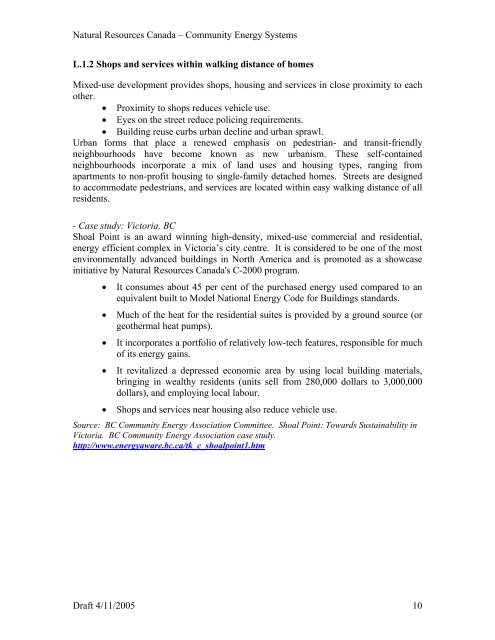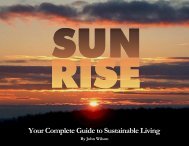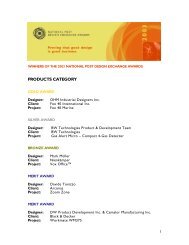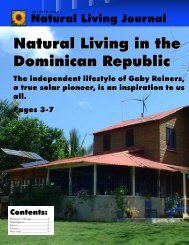Volume 3 - Program & Project Ideas (PDF - 4.5 - Natural Life Network
Volume 3 - Program & Project Ideas (PDF - 4.5 - Natural Life Network
Volume 3 - Program & Project Ideas (PDF - 4.5 - Natural Life Network
Create successful ePaper yourself
Turn your PDF publications into a flip-book with our unique Google optimized e-Paper software.
<strong>Natural</strong> Resources Canada – Community Energy Systems<br />
L.1.2 Shops and services within walking distance of homes<br />
Mixed-use development provides shops, housing and services in close proximity to each<br />
other.<br />
• Proximity to shops reduces vehicle use.<br />
• Eyes on the street reduce policing requirements.<br />
• Building reuse curbs urban decline and urban sprawl.<br />
Urban forms that place a renewed emphasis on pedestrian- and transit-friendly<br />
neighbourhoods have become known as new urbanism. These self-contained<br />
neighbourhoods incorporate a mix of land uses and housing types, ranging from<br />
apartments to non-profit housing to single-family detached homes. Streets are designed<br />
to accommodate pedestrians, and services are located within easy walking distance of all<br />
residents.<br />
- Case study: Victoria, BC<br />
Shoal Point is an award winning high-density, mixed-use commercial and residential,<br />
energy efficient complex in Victoria’s city centre. It is considered to be one of the most<br />
environmentally advanced buildings in North America and is promoted as a showcase<br />
initiative by <strong>Natural</strong> Resources Canada's C-2000 program.<br />
• It consumes about 45 per cent of the purchased energy used compared to an<br />
equivalent built to Model National Energy Code for Buildings standards.<br />
• Much of the heat for the residential suites is provided by a ground source (or<br />
geothermal heat pumps).<br />
• It incorporates a portfolio of relatively low-tech features, responsible for much<br />
of its energy gains.<br />
• It revitalized a depressed economic area by using local building materials,<br />
bringing in wealthy residents (units sell from 280,000 dollars to 3,000,000<br />
dollars), and employing local labour.<br />
• Shops and services near housing also reduce vehicle use.<br />
Source: BC Community Energy Association Committee. Shoal Point: Towards Sustainability in<br />
Victoria. BC Community Energy Association case study.<br />
http://www.energyaware.bc.ca/tk_c_shoalpoint1.htm<br />
Draft 4/11/2005 10






